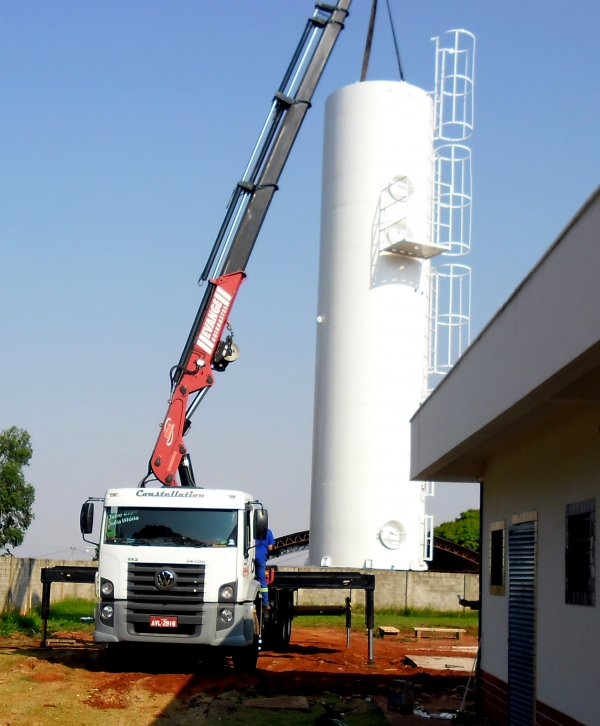When it comes to efficient liquid storage, a tubular metal reservoir is a reliable and robust solution. Praised for its structural integrity and design, this type of reservoir is ideal for various industries, including farming, manufacturing, and commercial projects.

In this guide, you’ll learn everything about tubular metal reservoirs. Whether you’re looking for a solution to store water, chemicals, or other liquids, this comprehensive overview will help you make the right choice.
What Is a Tubular Metal Reservoir?
A tubular metal reservoir is a cylindrical storage system, constructed for durability and efficiency. Typically made from materials like stainless steel, galvanized steel, or aluminum, these reservoirs are resistant to corrosion and structural stress.

Thanks to its tubular shape, this reservoir ensures structural stability, making it an excellent choice for large volumes of liquids. The ability to adapt sizes and specifications make it highly versatile.
Key Features of Tubular Metal Reservoirs
These tanks offer several advantages that set them apart from other types of reservoirs. Here’s a breakdown of their benefits:
- Long-Lasting Build: Crafted from materials like stainless or galvanized steel, these reservoirs withstand extreme conditions.
- Compact Design: The tubular shape optimizes storage capacity, making it practical for limited areas.
- Versatility: Perfect for storing water, chemicals, or fuels, these reservoirs are adaptable to diverse needs.
- Corrosion Resistance: With protective coatings, these tanks are highly durable, ensuring long-term reliability.
- Customizability: Can be tailored to meet specific requirements, allowing for optimal performance in any scenario.
Tips for Selecting the Best Metal Storage Tank
Choosing the ideal metal tank depends on your specific requirements. Here’s what you should keep in mind:
- Storage Volume: Determine the volume you need to store. High-capacity reservoirs work best for factories or farms, while compact models are great for homes or small businesses.
- Material: Consider whether you need stainless steel, aluminum, or galvanized steel. Steel is durable and rust-resistant, while galvanized options work well for non-drinking water.
- Placement: Think about where the tank will be installed. Above-ground tanks are easier to access and maintain, while buried tanks offer greater security and protection.
- Additional Features: Ensure the tank has coatings for corrosion resistance to extend its lifespan.
- Cost Efficiency: Set a budget that balances upfront costs with durability. Higher-quality tanks may save money in the long run.
Tips for Longevity and Performance
Regular care is essential to ensure the tank remains in optimal condition. Here are some maintenance tips:
- Keeping the Interior Clean: Periodically remove sediment and buildup to maintain water quality.
- Inspect for Damage: Conduct regular inspections for any signs of wear, and repair problems to avoid costly replacements.
- Protective Coatings: Ensure protective layers remain intact to extend the reservoir’s durability.
- Prepare for Environmental Factors: Protect the tank from extreme temperatures and weather to avoid damage.
Applications of Tubular Metal Reservoirs

These reservoirs are widely used due to their versatility and durability. Common applications include:
- Farming Use: Used for water storage in agricultural operations.
- Industrial: Perfect for storing chemicals, oils, or production liquids.
- Public Works: Used in water treatment plants or emergency water supply systems.
- Residential: Compact options are perfect for household needs.
Is a Tubular Metal Reservoir Right for You?
In conclusion, a tubular metal reservoir is an excellent choice for liquid storage needs. Combining strength with adaptability, make it a worthwhile investment.
From small-scale bebedouro australiano projects to caixa dagua taçacaixa d água metalica tipo taça 5000 litros preço large operations, a tubular metal reservoir is a solution you can trust. Invest in one now and experience the benefits!
Comments on “The Ultimate Guide to Choosing an Australian Water Fountain”